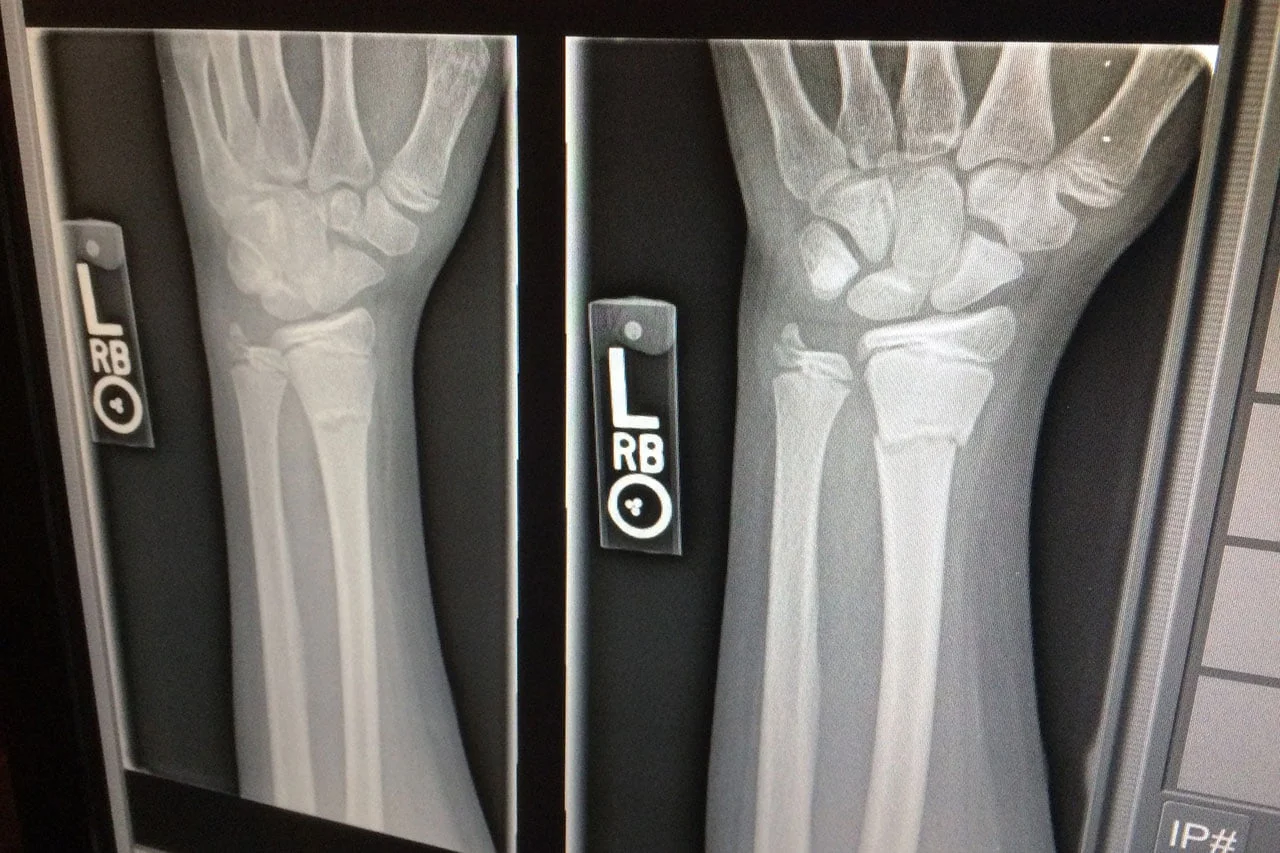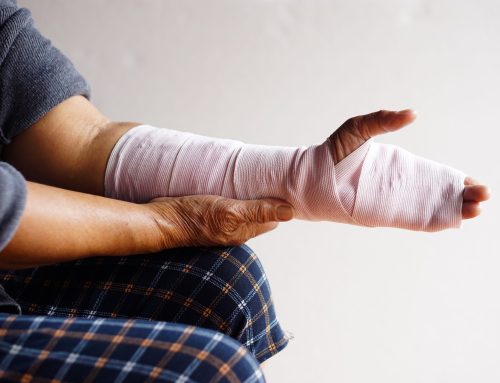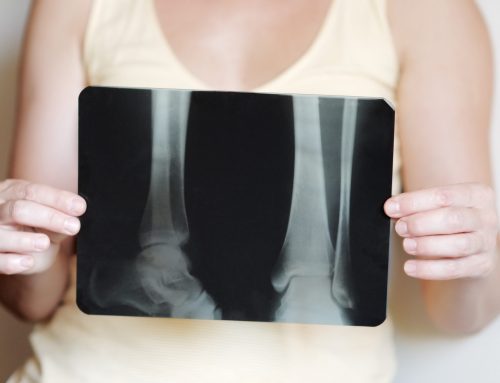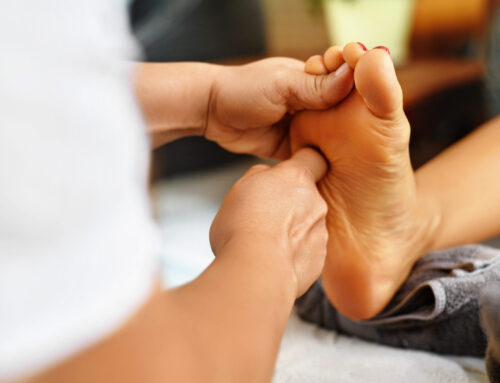With 206 bones in the human body, Evel Knieval would have had to break each bone more than once to snag his world record of 433 fractures by the time he retired from stunt driving. In reality, he probably injured the common ones a handful of times. Ouch.
Have you ever broken a bone? If not, we can probably guess you know someone that has. After all, it’s not unusual. However, not all bones are equal. Some are more likely to break than others, and that answer can change as you age.

Children can be more susceptible to a collar bone fracture (clavicle) with its thin structure protruding from their bodies. It’s often the result of catching themselves from a fall, a direct hit from another child running on the playground, or while playing sports. It can even happen to newborns as they make their way through the birth canal.
You can break a bone while involved in an intense activity or by simply being a little more clumsy that day. Sometimes, they’re unavoidable, and it’s out of your control. But being mindful of common breaks may help you avoid them. These are the three most common places for a fracture and what you can expect during recovery.
3 Most Common Fracture Sites
Common fracture sites for those over 65 may drastically change compared to the younger population. Hip fractures are prevalent and dangerous for patients at the age of retirement. However, over the course of a lifetime, these are the three most common places for a broken bone to occur.
Collar Bone
Anyone that’s broken their collar bone, professionally known as the clavicle, knows the pain that rushes through your body when you try to move your shoulder. You may notice a bulge, a cracking sound, or typical signs of swelling and bruising.
Remember when we mentioned this could also happen to a newborn? They can’t tell you about it yet. But if a baby hasn’t moved an arm for a few days, it’s worth checking out.
Children are more susceptible to this break from rough-housing because the bone is a lot softer. It doesn’t fully harden until around the age of 20. Since this bone runs from shoulder to shoulder and is very slender, it can easily break from a contact sport, accident, or simply tripping on the pavement.
Treatment will vary by severity and exactly where it broke on the bone. For less extreme cases, you’ll just wear a sling for a few weeks until the bone heals. If the fracture is displaced, you may require surgery to align the edges of the bone for proper healing.
Arm
A child flipping over their handlebars, a teen skiing down the slopes, and an adult tripping over a curb all have a common reflex – you’ll want to catch your fall by putting out your hands.
While the arm contains several common bones that can break, the likeliness of where the break occurs changes as you age. The humerus is what many refer to as their upper arm, while the radius and ulna compose your forearm. 50% of fractures in adults are in their arms, and they’re easily the second most common fracture site in children, behind the collar bone.
If you suddenly get the symptoms of bruising, swelling, and a limited range of motion, it’s worth being checked out. With an open wound and full-out bone making an appearance, a hospital visit immediately is best.
The longer you wait to have it examined, the higher the risk of complications. Otherwise, you could get a permanently limited range of motion, post-traumatic arthritis, or an infection. The healing process is relatively straightforward and often involves a splint, cast, or surgery. Physical therapy is highly recommended to help restore movement and strength more quickly. The first few sessions are typically free if you’re suffering from an injury.
Ankle
Your ankle is made up of three bones. The tibia is on the big toe side of your leg, the fibula is on the pinky toe side, and then there is the talus. Breaking any one of these is common, especially in the middle-aged population. You can easily injure your ankle by falling, being in a car accident, or simply just rolling the ankle by walking a little funny.
You’ll know immediately if you should have it examined if you’re unable to walk on it or there is bruising, swelling, and tenderness. However, this could also be the case of a severe sprain.
The healing process is relatively simple, and sometimes, you can still walk on your injured foot. Some fractures will require it to be immobilised using a cast, and you won’t be able to put any weight on it. Some just need a boot or air cast that eventually allows you to start bearing weight back on your injured ankle. Severe injuries will call for surgery to realign the bones or insert screws to help regain any lost mobility.
Nobody sets out on a ski-run or a grocery store trip expecting to get a fracture. But it happens. The best thing you can do is address the injury site as soon as possible to avoid further complications and an extended healing process. But what happens if you’ve fractured a body part that affects your work? You’ll want help to get back to normal ASAP.
A 20 minute a day self-treatment device can help you on the road for faster recovery. Studies show that fresh fractures heal 38% faster with this type of treatment. Even if you’re experiencing pain from a delayed or non-union fracture, LIPUS devices can help. Contact us to tell us your fracture story, and we’ll help you get back to pre-injury living.
Have you broken one of the three most common bones? How did you do it? How long did it take to heal? Share your experience with our readers, so they know what to expect after an injury.






Leave A Comment